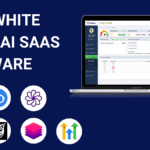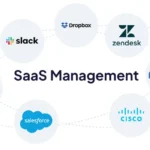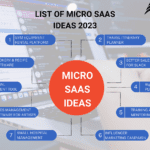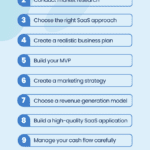A SaaS Content Management System (CMS) is a cloud-based platform for creating, managing, and optimizing digital content. It offers accessibility, scalability, and ease of use.
A SaaS Content Management System simplifies the process of managing digital content by offering cloud-based solutions. Businesses of all sizes can benefit from its accessibility and scalability. Users can access their content from anywhere, at any time, using any device with internet connectivity.
This flexibility makes it ideal for remote teams and dynamic work environments. The system also ensures that software updates and security patches are automatically handled, reducing the burden on IT departments. With a user-friendly interface, even non-technical users can efficiently create, edit, and publish content. This leads to improved productivity and better content management overall.
The Rise Of Saas Cms
SaaS Content Management Systems (CMS) are rapidly changing how businesses manage content. Traditional systems are being replaced by cloud-based solutions. This shift offers many benefits including scalability, flexibility, and cost-efficiency.
From Traditional To Cloud-based Solutions
Traditional CMS platforms required heavy infrastructure. Businesses needed servers, IT teams, and regular maintenance. These systems were often expensive and complex. They also took time to set up and manage.
Cloud-based solutions have changed this landscape. With SaaS CMS, everything is hosted in the cloud. This eliminates the need for physical servers and reduces costs. Updates and maintenance are handled by the service provider. This allows businesses to focus on creating content.
Key Factors Driving Adoption
The rise of SaaS CMS is driven by several factors:
- Scalability: Easily scale resources up or down based on needs.
- Cost-Efficiency: Pay for what you use, reducing unnecessary expenses.
- Accessibility: Access your CMS from anywhere with an internet connection.
- Automatic Updates: Always have the latest features and security patches.
- Flexibility: Easily integrate with other tools and platforms.
| Feature | Traditional CMS | SaaS CMS |
|---|---|---|
| Infrastructure | On-premises | Cloud-based |
| Maintenance | Manual | Automatic |
| Scalability | Limited | High |
| Cost | High | Variable |
The adoption of SaaS CMS is growing. Businesses seek more efficient and cost-effective content management solutions. This trend is likely to continue as technology evolves.

Credit: www.figma.com
Core Features Of Saas Cms Platforms
Software as a Service (SaaS) Content Management Systems (CMS) offer many features. These features help businesses manage and deliver content efficiently. Let's explore the core features that make SaaS CMS platforms stand out.
Intuitive Content Creation And Management
A key feature of SaaS CMS platforms is their intuitive content creation and management tools. These tools allow users to create, edit, and publish content easily. With a user-friendly interface, even beginners can manage content without technical skills.
- Drag-and-drop editors
- WYSIWYG (What You See Is What You Get) editors
- Pre-designed templates
These features ensure that content creation is simple and fast. Users can focus on producing high-quality content without worrying about the technical aspects.
Built-in Seo And Analytics Tools
SaaS CMS platforms come with built-in SEO and analytics tools. These tools help users optimize their content for search engines. They also provide insights into content performance.
| SEO Tools | Analytics Tools |
|---|---|
| Keyword suggestions | Traffic analysis |
| Meta tags management | User behavior tracking |
| SEO audits | Conversion rates |
These tools ensure that content reaches a wider audience and performs well. Users can track and improve their content strategies based on real data.
Scalability And Performance
SaaS CMS platforms are designed to scale with your business. They offer scalability and high performance, ensuring that your website can handle increased traffic and content volume.
- Auto-scaling infrastructure
- Content delivery networks (CDNs)
- High uptime and reliability
These features ensure that your website remains fast and responsive. Users can enjoy a seamless experience regardless of traffic spikes or content growth.
Benefits Of Saas Cms For Businesses
A SaaS Content Management System (CMS) offers numerous benefits for businesses. These benefits make it an attractive option for many organizations. Let's explore some of the key advantages.
Lower Initial Costs And Ongoing Investment
One of the main benefits is the lower initial costs. Businesses do not need to invest in expensive hardware or infrastructure. SaaS CMS solutions operate on a subscription basis. This means businesses only pay for what they need.
There are also lower ongoing investments. Traditional CMS requires maintenance and upgrades, which can be costly. SaaS CMS providers handle these tasks, reducing the burden on businesses.
| Traditional CMS | SaaS CMS |
|---|---|
| High upfront costs | Subscription-based pricing |
| Maintenance responsibilities | Provider handles maintenance |
Seamless Collaboration And Access Anywhere
SaaS CMS systems allow for seamless collaboration. Team members can access the CMS from anywhere with an internet connection. This is ideal for businesses with remote teams or multiple locations.
With SaaS CMS, there is no need for complex VPN setups. Users can access the system securely from any device. This flexibility boosts productivity and ensures that work continues smoothly.
- Access from any location
- Improved team collaboration
- No need for complex VPNs
Automatic Updates And Maintenance
A significant benefit of SaaS CMS is automatic updates. Providers regularly update the software to ensure it is secure and up-to-date. Businesses do not need to worry about manual updates or downtime.
Maintenance is also handled by the provider. This means less stress and fewer technical issues for your team. Focus on your core business tasks while the provider takes care of the technical aspects.
- Regular software updates
- Enhanced security
- Reduced technical issues
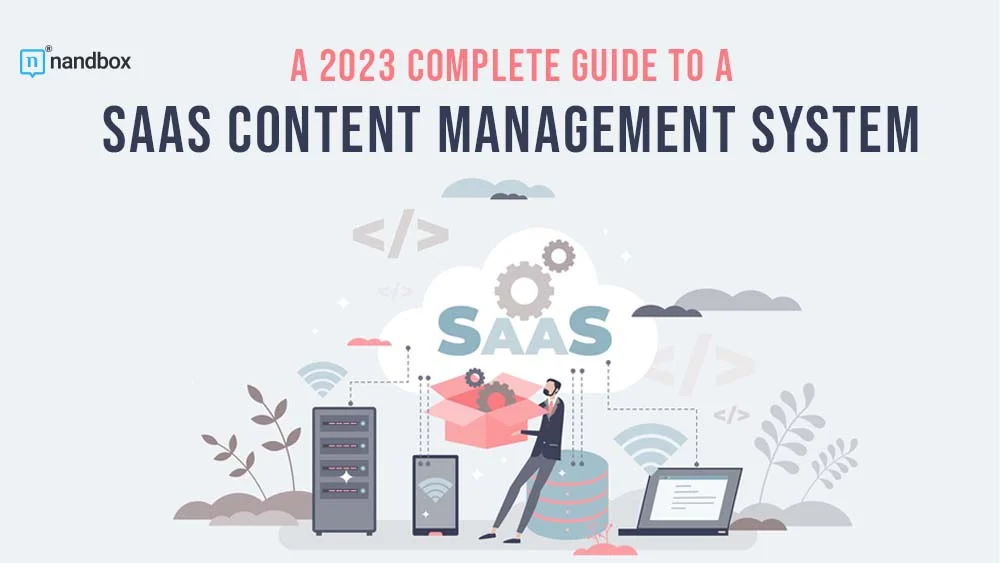
Credit: nandbox.com
Comparing Saas Cms To Traditional Cms
Choosing the right Content Management System (CMS) is crucial. With the advent of SaaS (Software as a Service) CMS, businesses have options. Let's explore the differences between SaaS CMS and Traditional CMS under various aspects.
Cost Efficiency And Roi
SaaS CMS typically requires a subscription. This subscription covers updates, support, and maintenance. There are no upfront costs for software or hardware. This model offers predictable monthly expenses. Companies can scale up or down as needed.
Traditional CMS, on the other hand, involves higher initial costs. These include software purchase, server setup, and maintenance. Ongoing expenses for updates and support can add up. The ROI might be slower due to these upfront investments.
| Feature | SaaS CMS | Traditional CMS |
|---|---|---|
| Initial Cost | Low | High |
| Monthly Fees | Yes | No |
| Maintenance | Included | Extra |
User Experience And Accessibility
SaaS CMS is usually more user-friendly. It offers intuitive interfaces and easy setup. Users can access it from anywhere with an internet connection. Collaboration becomes simpler and faster.
Traditional CMS might need a steeper learning curve. Users might require more training. Access is often limited to specific locations or devices. This can hinder flexibility and real-time collaboration.
- SaaS CMS: User-friendly, easy access, real-time collaboration
- Traditional CMS: Steeper learning curve, location-bound access
Security And Compliance Considerations
SaaS CMS providers handle security measures. They offer regular updates and patches. Compliance with standards like GDPR is often ensured. This reduces the burden on the company's IT team.
Traditional CMS requires in-house security management. The company must handle updates and patches. Ensuring compliance can be resource-intensive. It demands continuous monitoring and adjustments.
- SaaS CMS: Provider handles security, ensures compliance
- Traditional CMS: In-house security management, resource-intensive compliance
Customization And Integration Capabilities
A SaaS Content Management System (CMS) offers robust customization and integration capabilities. It helps businesses tailor their websites to their unique needs. This flexibility is essential for enhancing user experience and achieving business goals.
Extending Functionality With Plugins And Apis
Many SaaS CMS platforms support plugins and APIs. These tools extend the system's functionality. Plugins are easy to install. They add new features without complex coding. Examples include SEO tools, social media integrations, and e-commerce functions.
APIs allow for deeper integrations. They enable the CMS to communicate with other software. This can include CRM systems, email marketing tools, and analytics platforms. By using APIs, businesses can automate workflows and improve efficiency.
Here is a table that shows popular plugins and their uses:
| Plugin | Function |
|---|---|
| Yoast SEO | Improves search engine visibility |
| WooCommerce | Adds e-commerce capabilities |
| Mailchimp | Integrates email marketing |
Ensuring Brand Consistency And Custom Designs
A SaaS CMS allows for custom designs. This ensures your website matches your brand identity. You can choose templates that align with your brand colors and fonts. This consistency helps build trust with your audience.
Here are some key points to maintain brand consistency:
- Use consistent colors and fonts.
- Maintain a uniform tone of voice.
- Ensure logos and images are high quality.
Custom design options also include layout adjustments. You can change the structure of your pages. This flexibility ensures that your website is not only attractive but also user-friendly.

Credit: community.crownpeak.com
Success Stories: Saas Cms In Action
Successful companies across industries use SaaS CMS to manage content. Their stories show how SaaS CMS boosts traffic, engagement, and sales. Discover how diverse sectors benefit from these systems.
Case Studies From Diverse Industries
Different industries leverage SaaS CMS for unique needs. Here are a few case studies:
| Industry | Company | Success Metrics |
|---|---|---|
| E-commerce | Shopify |
|
| Healthcare | HealthTech |
|
| Education | Edutech |
|
Impact On Traffic, Engagement, And Sales
A SaaS CMS can significantly impact a business's online presence. Here are some key impacts:
- Traffic: Many companies see a major boost in site traffic.
- Engagement: Improved content management leads to higher user engagement.
- Sales: Sales often increase due to better content delivery.
Let's break down the impact in detail:
- Enhanced User Experience: A good CMS offers a seamless user experience.
- SEO Optimization: SaaS CMS platforms often come with built-in SEO tools.
- Content Personalization: Personalized content can increase user retention.
These benefits show how SaaS CMS can transform a business. Companies in various industries leverage these systems for growth.
Choosing The Right Saas Cms For Your Needs
Choosing the right SaaS Content Management System (CMS) can transform your digital strategy. A well-selected CMS enhances productivity, scalability, and user experience. This section helps you choose the best SaaS CMS for your needs.
Assessing Your Organizational Requirements
Start by identifying your organization's specific needs. Think about your business size, industry, and target audience. Different businesses have unique requirements, so tailor your CMS choice accordingly.
| Requirement | Consideration |
|---|---|
| Business Size | Small, medium, or large organization |
| Industry | E-commerce, education, healthcare, etc. |
| Target Audience | Customer demographics and behavior |
Evaluate your current content workflows. Determine the number of users who will interact with the CMS. Think about their roles and responsibilities.
- Content Creators
- Editors
- Admin Users
Check for integrations with existing tools. Ensure compatibility with CRM, email marketing, and analytics platforms. This ensures a seamless workflow.
Evaluating Vendor Support And Community
Vendor support is crucial for smooth operations. Look for vendors offering 24/7 support. Check if they provide comprehensive documentation and training resources.
A strong user community can be very beneficial. Active forums and user groups provide additional support. They offer insights, tips, and solutions to common problems.
- 24/7 Customer Support
- Documentation and Training
- Active User Community
Consider the vendor’s reputation in the market. Read reviews and testimonials. This helps gauge their reliability and customer satisfaction levels.
Choosing the right SaaS CMS involves thorough research and assessment. Align it with your organizational requirements and ensure robust vendor support and community.
Future Trends In Saas Cms
The world of SaaS Content Management Systems (CMS) is evolving rapidly. New technologies shape the future of digital content. Here are some emerging trends in SaaS CMS.
Ai And Machine Learning Integration
Artificial Intelligence (AI) and Machine Learning (ML) are transforming SaaS CMS. These technologies help automate tasks and improve user experiences.
- Content Personalization: AI analyzes user behavior to deliver personalized content.
- Automated Content Creation: ML can generate content ideas based on trends.
- Predictive Analytics: AI predicts future content needs based on data patterns.
AI and ML are essential for a smarter, more efficient CMS.
Adapting To The Evolving Digital Landscape
The digital world changes fast. SaaS CMS must adapt to these changes.
- Mobile-First Design: More users access content on mobile devices.
- Voice Search Optimization: Voice search is becoming more popular.
- Enhanced Security: Protecting user data is more important than ever.
Future-ready CMS platforms must be flexible and responsive.
| Trend | Impact |
|---|---|
| AI and ML Integration | Improved efficiency and user experience |
| Mobile-First Design | Better user engagement on mobile devices |
| Voice Search Optimization | Enhanced search functionality |
| Enhanced Security | Increased user trust |
SaaS CMS must keep up with these trends to stay relevant.
Frequently Asked Questions
What Is The Saas Content Management System?
A SaaS content management system is a cloud-based platform. It allows users to create, manage, and publish digital content easily.
What Is The Difference Between Saas And Cms?
SaaS (Software as a Service) provides software via the cloud. CMS (Content Management System) helps manage website content. SaaS covers various applications, while CMS focuses on web content. SaaS requires no installation; CMS might. SaaS often includes maintenance; CMS needs manual updates.
SaaS is broader; CMS is specialized.
What Is The Difference Between Installed And Saas In Cms?
Installed CMS is hosted on your servers, offering more control. SaaS CMS is cloud-based, requiring no server management.
What Are The Benefits Of Saas Cms?
SaaS CMS offers easy scalability, automatic updates, and cost-efficiency. It ensures data security and provides seamless access from any location.
Conclusion
A SaaS Content Management System offers streamlined content handling and enhanced collaboration. It simplifies tasks, boosts efficiency, and supports scalability. Embrace this technology to stay competitive and deliver superior user experiences. Investing in a SaaS CMS can transform your content strategy and drive business growth.



